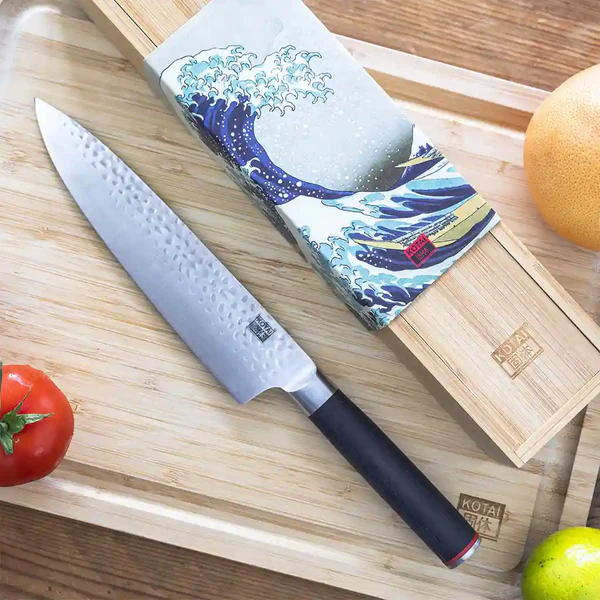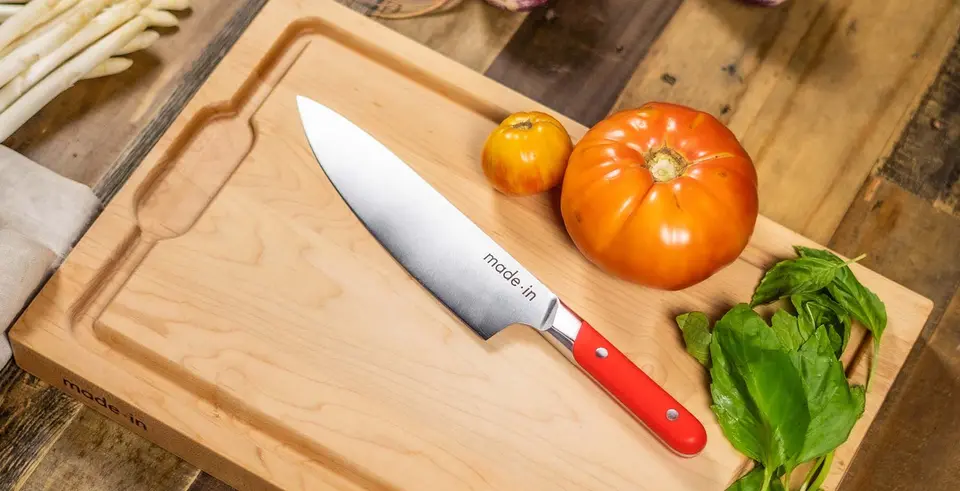Last updated on January 11th, 2024 at 03:36 am
In culinary arts, instruments are crucial. Chef’s knives are exceptional. A chef’s knife is a versatile kitchen utensil. In this post, we’ll discuss a chef’s knife’s purpose, key qualities, and why professional and home cooks need one.
The Versatility of a Chef’s Knife

A chef’s knife can cut several things. Its design allows for slicing, dicing, chopping, and mincing. Chef’s knives are designed for everyday cookery.
Chop veggies
Chef’s knives cut vegetables. Its sharp, broad blade chops efficiently. A chef’s knife makes slicing salads, stir-fries, and vegetable stews easy.
Meat Cutting
Chef’s knives also cut flesh. A chef’s knife gives you the control and precision needed to slice deli meats, roasts, and steaks evenly.
Cut Ingredients
Chef’s knives excel at dicing ingredients, which is a typical cooking method. It dices vegetables, fruits, and herbs evenly because to its sharp edge and strong construction.
Garlic and herb mincing
Chef’s knives are ideal for finely mincing herbs and garlic. Its sharp blade and comfortable handle allow you to neatly mince delicate herbs and pungent garlic cloves for flavorful recipes.
Features of a Chef’s Knife

Knowing a chef’s knife’s major features helps us grasp its purpose. Chef’s knives with good design are functional and effective.
Blade Size
Chef’s knives usually have 8-inch blades. This length is versatile and manoeuvrable for cutting. Chopping and slicing are easier with a blade’s “belly,” which is curved.
Blade Material
High-carbon stainless steel, which is corrosion-resistant and sharp, is used to make chef’s knives. This substance offers a sharp, long-lasting edge.
Fulltang Construction
Full-tang chef’s knives are strong and stable because the blade extends into the handle. This design improves balance and reduces blade breakage.
Handle Style
Chef’s knives’ handles are vital for comfort and control. Wood, plastic, and composite handles are common. Ergonomic handles are comfortable and secure.
Chef’s Knife FAQs
A chef’s knife’s ideal weight?
Personal preference and use determine a chef’s knife’s weight. A chef’s knife should be hefty but not heavy. This weight aids cutting. Well-balanced chef’s knives weigh 6–10 ounces.
How do I preserve my chef’s knife?
Maintaining your chef’s knife is essential. Important tips:
After usage, wash the knife in warm soapy water.
The knife can corrode if left in the washbasin or dishwasher.
Before storing, dry the knife.
Keep the blade sharp with an honing steel or sharpening stone.
Keep the knife in a knife block or on a magnetic strip to prevent mishaps.
Can a chef’s knife do more than cut?
Chef’s knives can be used for other kitchen activities besides chopping. Such as:
Crushing garlic or ginger: Use the blade’s flat side.
Smashing ingredients: The wide blade may shatter nuts or lemongrass.
Moving chopped ingredients: Scoop chopped ingredients from the cutting board to the pan with the blade’s flat side.
Chef’s knives for beginners?
Absolutely! Beginners should use a chef’s knife. Its versatility and ease of use make it appropriate for many kitchen jobs. A good chef’s knife and precise cutting techniques can improve your cooking and make it more fun.
Chef’s knife sharpening frequency?
Sharpening depends on usage and preference. Sharpen a chef’s knife every few months or when its cutting performance declines. Between sharpenings, an honing steel helps keep the knife sharp.
Conclusion
Finally, a chef’s knife is a flexible and trustworthy culinary equipment. Professional chefs and home cooks depend on it for chopping vegetables and slicing meats. Understanding a chef’s knife’s qualities and care might help you choose one for cooking.
Remember, buying a good chef’s knife and taking care of it will improve your cooking experience and provide you a durable, effective instrument.
